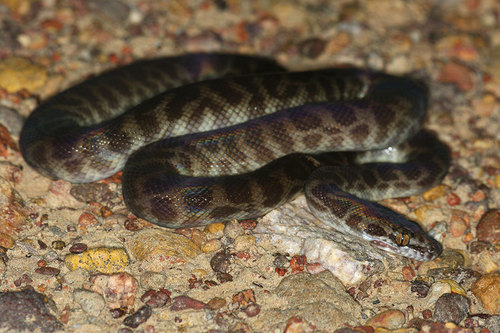
Children's python
The Children's Python, with its shimmering scales, brings a touch of elegance to Australia's northern landscapes. This gentle snake, often seen basking on rocks, plays a vital role in controlling small mammal populations, showcasing nature's delicate balance.
20 years
Lifespan
Length: 91 - 122 cm
Size
Brown, Grey, Yellow, Dark, Caramel, Light-Brown
Color
Low
Aggression
Least Concern
Conservation Status
Stable
Population Trend
Characteristics
Antaresia childreni, commonly known as the Children's Python, is a small python species native to northern Australia. It thrives in diverse habitats like woodlands, forests, and rocky outcrops. Notable for its smooth, iridescent scales, it primarily preys on small mammals and birds. Its docile nature makes it popular among reptile enthusiasts.
Distribution Range of the Children's python
Antaresia childreni, commonly known as Children's python, is native to Australia. Its geographical distribution includes the northern parts of the continent, specifically in the regions of Northern Territory, northeastern Western Australia, and northwestern Queensland.
Children's python's Habitat
Environmental Conditions
Children's pythons typically inhabit tropical and subtropical regions. They are found in a variety of environments ranging from rainforests and savannas to grasslands and rocky outcrops. The climate in these areas is generally warm and humid, with distinct wet and dry seasons.
Ecological Niche
Antaresia childreni are primarily terrestrial and are known to occupy habitats with abundant cover such as leaf litter, fallen logs, and rock crevices. They are nocturnal, hunting small mammals and reptiles at night. Their ecological role involves controlling the populations of these prey species, contributing to the ecosystem's balance.
Copyright @ Nature Style Limited. All Rights Reserved.
 English
English